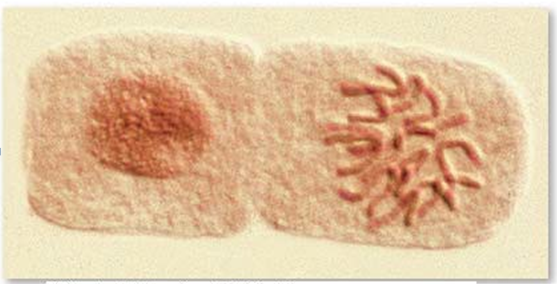Nonspecific chemical defenses include
A. stomach hydrochloric acid.
B. lactic acid and electrolytes of sweat.
C. the skin's acidic pH and fatty acids.
D. lysozyme.
E. All of the choices are correct.
Answer: E
You might also like to view...
In Mendel's peas, an individual heterozygous for seed color:
A. has only one kind of allele for seed color. B. has two different alleles for seed color. C. will express the dominant allele. D. will express the recessive allele. E. has two different alleles for seed color and will express the dominant allele.
How do viruses and viroids differ?
What will be an ideal response?
In a biology lab exercise, you are asked to examine cells of a growing onion root tip that has been sectioned to show many cells. In most of the cells, you easily see the circular or oval nucleus as a uniformly filled space in a membrane outline. In a small percentage of cells, you see chromosomes as distinct strands just as cell division begins, and as it progresses, because the chromatin

A. becomes less tightly wound, to facilitate cell division.
B. increases in length, as replication adds DNA sections to the original.
C. becomes more tightly folded, increasing their visible length.
D. becomes less tightly folded, increasing their visible length.
E. becomes more tightly wound, to protect DNA, and to more easily manage cell division.
During replication, which enzyme unwinds the DNA double helix?
A. DNA polymerase I B. DNA helicase C. DNA primase D. DNA ligase E. DNA gyrase